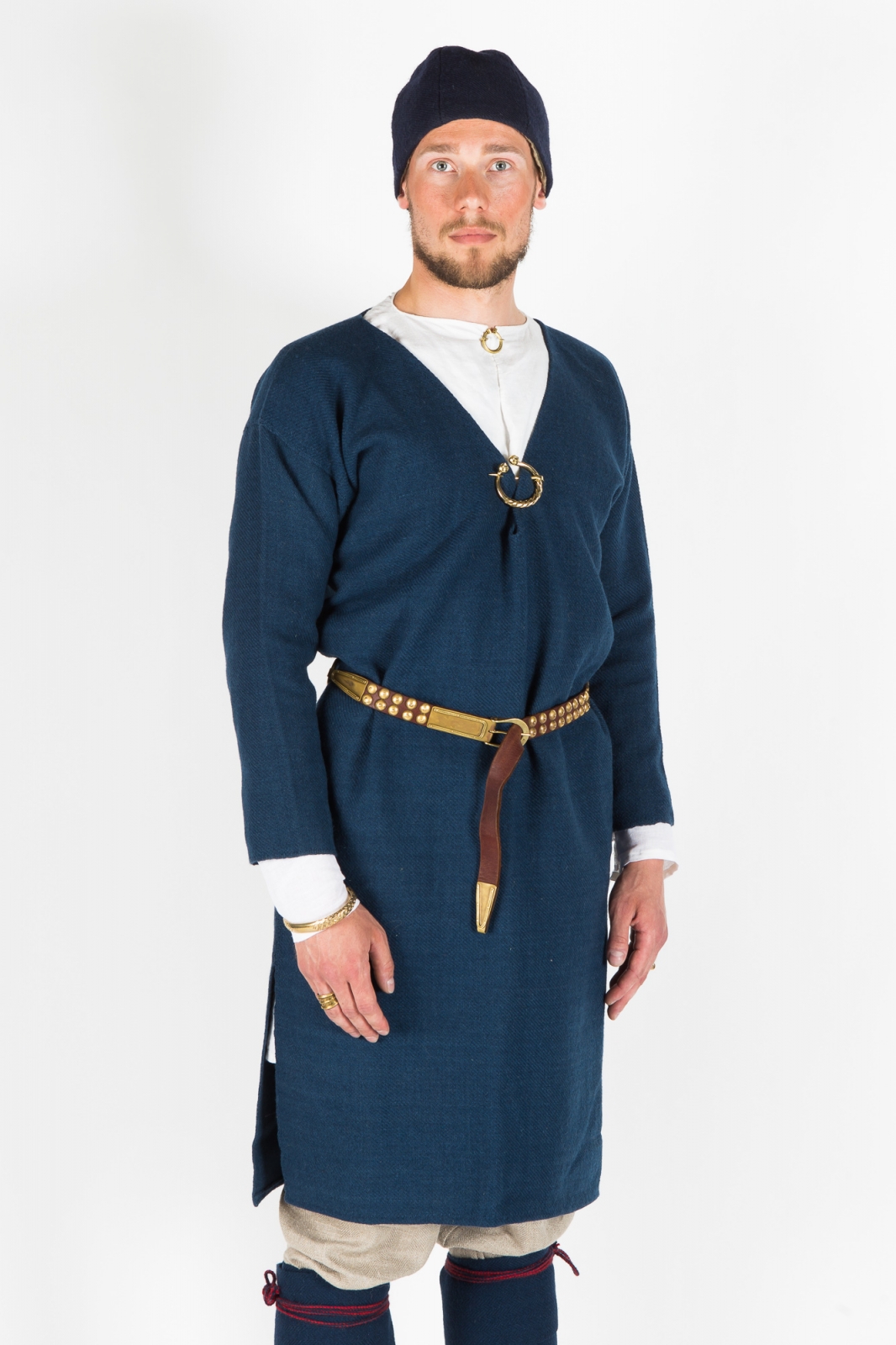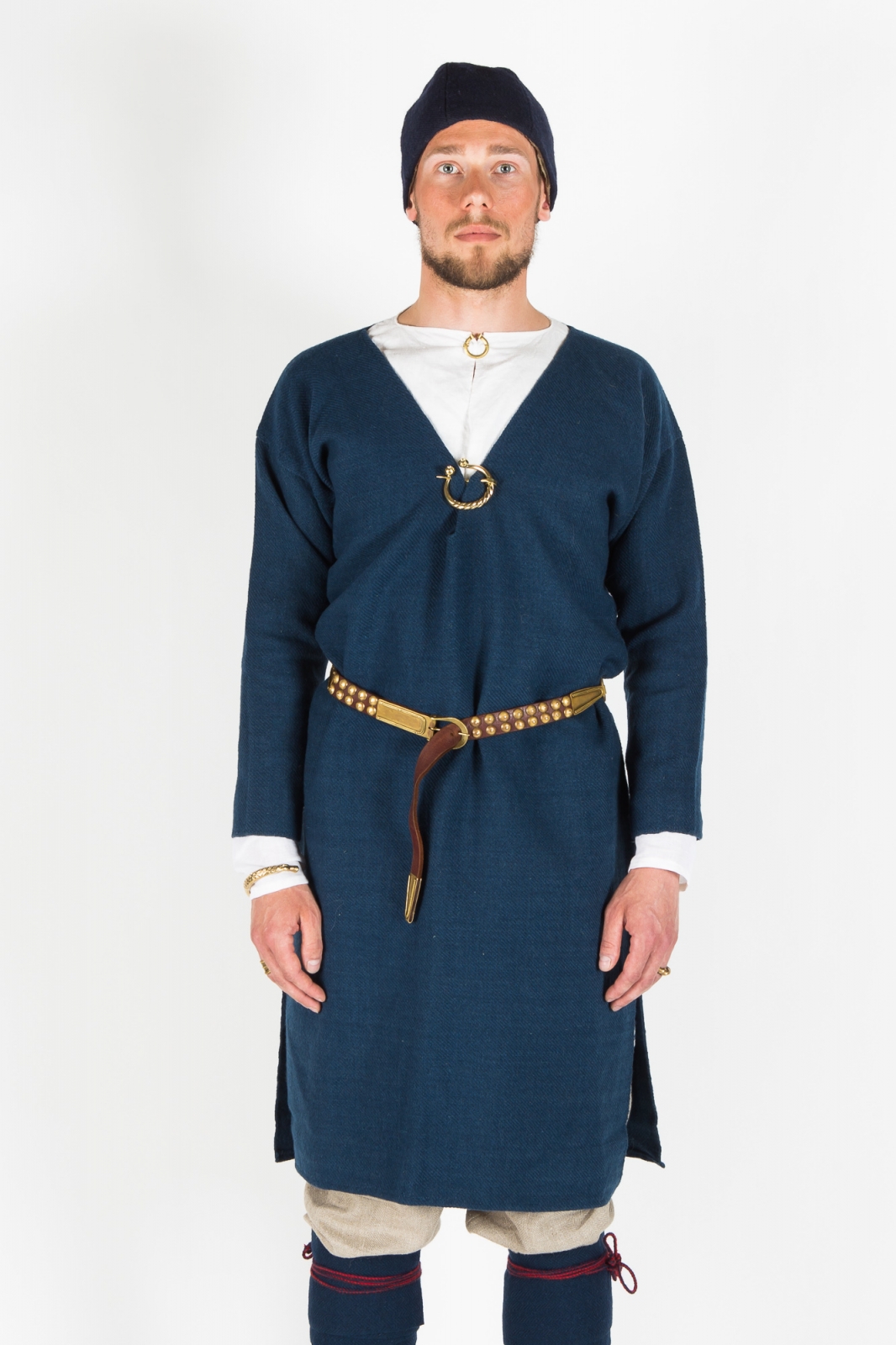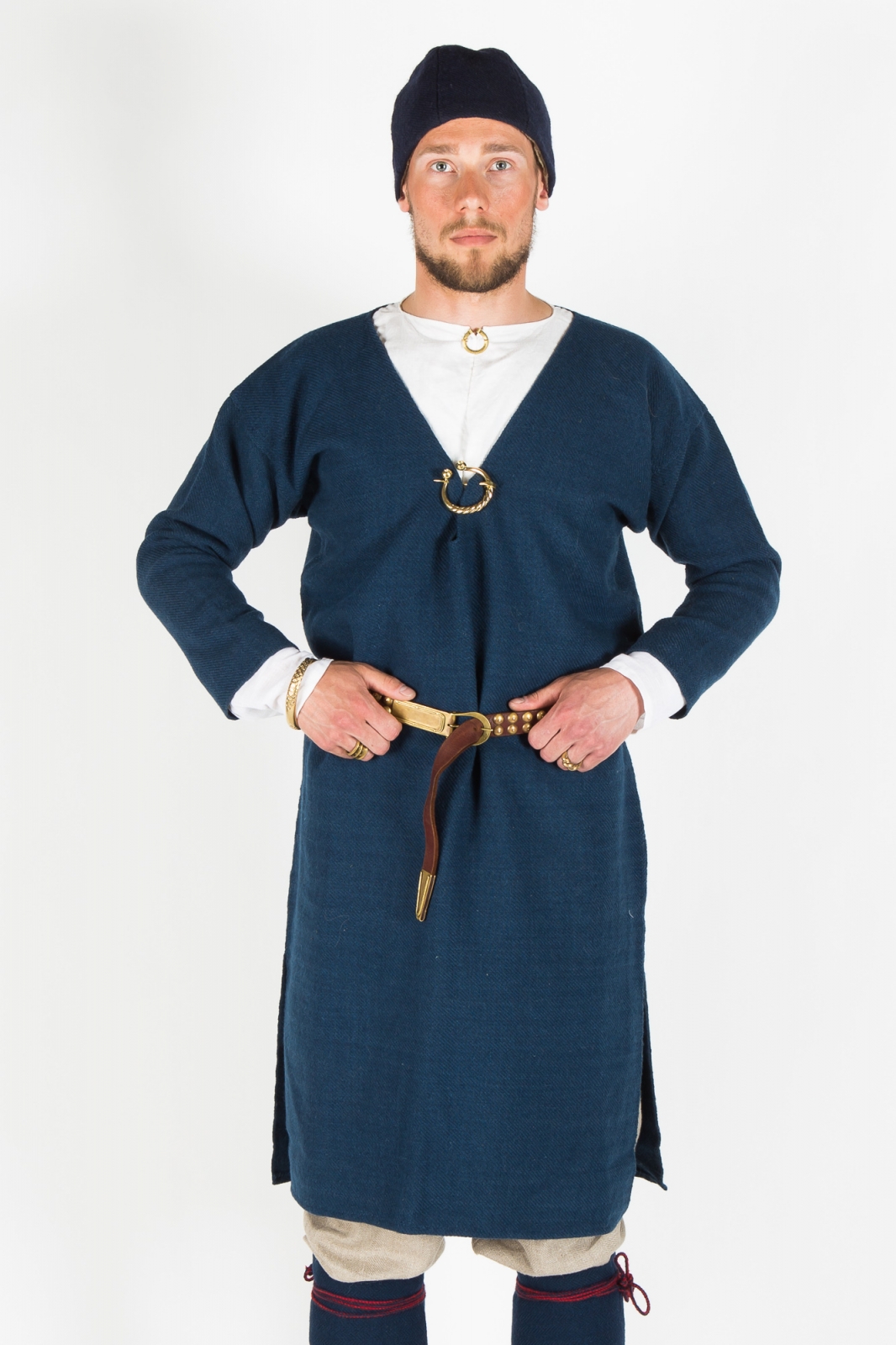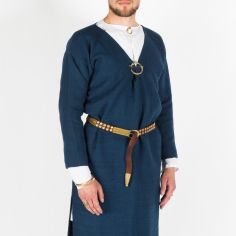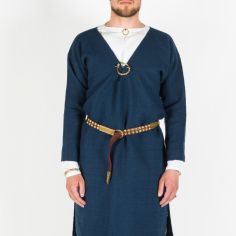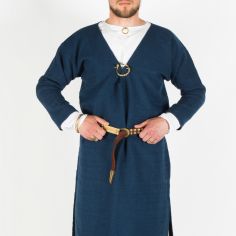Interpretation of a man’s costume of the 11th -12th century
Brief information
Men's everyday costume consisted of a linen shirt, woolen trousers, a jacket, leg bindings and a hat. These garments appeared to be free of ethnic variations in style since the clothing was practical and without special decorations. The footwear consisted of leather ankle boots. Outer garments were fastened with a leather belt, which was sometimes decorated with metal bindings. Adornments were used more for practical purposes – pinning up shirts and jackets. They were used in small numbers – sometimes men put on armbands and rings on their fingers. Only members of society with high ranking social status wore a larger number of adornments.
History and Origin
Archaeological costumes are garments that have been reconstructed based on materials found in excavations – from fragments of cloth, decorations and adornment. Archaeological excavations unearthing evidence dating back to the 16th century, give us an understanding of what local populations – the Curonians, Semigallians, Selonians, Latgallians, as well as Livs and Vends, wore.
The excavated materials have been preserved from the long standing tradition of dressing for the journey into the 'afterlife' whereby our Ancestors dressed in their best – rich, festive and adorned clothing. The oldest materials from which we are able to reconstruct archeological costumes, date back to the 7th century. In the centuries following, it appears each ethnic group developed its own distinct traditions for costume making. Over time newer traditions replaced the material culture of those ancient people – however, these newer traditions bridged traditional materials with the latest and more modern trends of that time. This eventually led to the 19th century Latvian traditional national costume that we all know today. This costume looks different, not only in its appearance/style, but its technical composition – when compared to its predecessors.
Archaeological costumes are mostly dark blue in color and are characterized by the use of metal decorations, the style of which varies between each tribe. Part of the ancient tradition of costume-making survived throughout the ages, so that despite changes along the way, there has remained an unaltered form reflected through all costumes.
